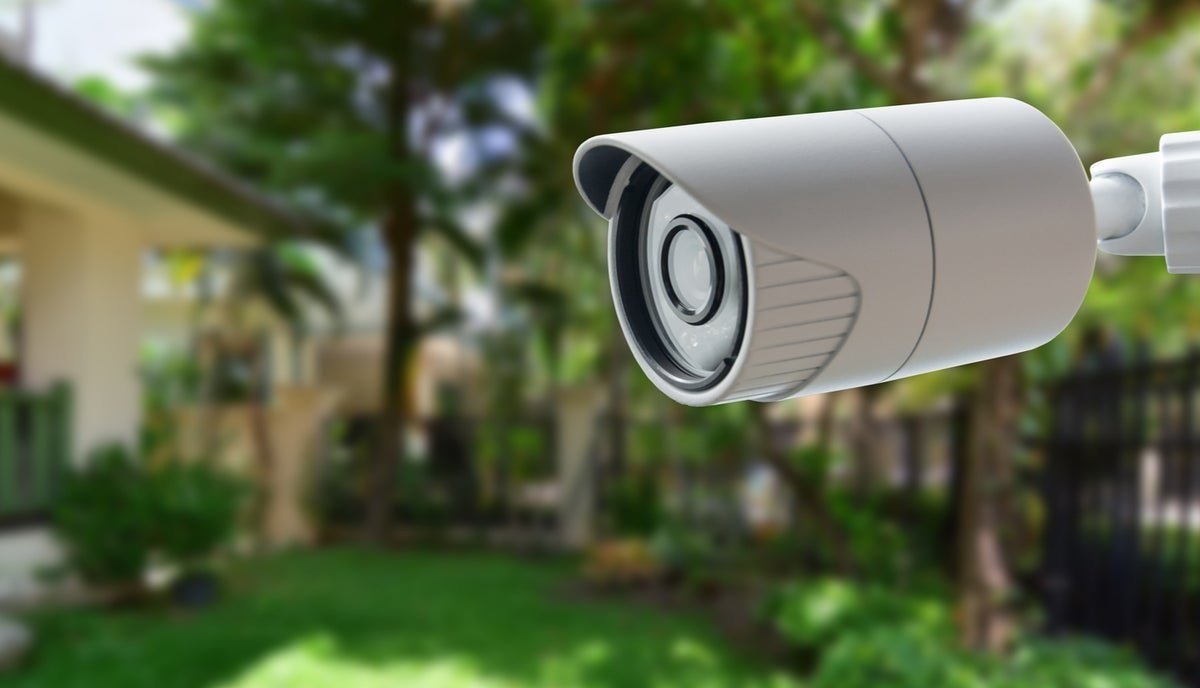What is Premises Security?
Every building needs a way to keep unwanted guests outside. Organizations need to restrict access to certain areas within their premises, even to people who have already been invited inside. Because of this, you need to adopt a set of security measures with which you can grant access to protected amenities for authorized personnel only. This could be for keeping the public out of your HQ, on-site third parties from areas where sensitive work goes on, or from mission-critical areas such as the server room.
Premises security refers to protecting people, property, and physical assets from events that could cause damage or loss. It is an optimal way to keep companies of all sizes secure and protected.
Premises security technologies are designed to protect your equipment, resources, and any other assets within your office space. Some examples are access control, surveillance, and alarm systems. They work in tandem to make up your physical security strategy.
The best, most viable physical security strategies use both technology and specialized hardware to achieve their safety goals. These safety goals include the protection of your assets from intruders, internal threats, accidents, and even responding to these threats.
Though often overlooked in favour of cybersecurity, physical premises security is equally important. All the firewalls in the world can’t help you if an attacker physically removes your storage media from the storage room.
AI-Powered Video
Surveillance
Smarter, Safer Access and Monitoring
Cabco delivers next-generation premises security and controlled access solutions using the power of artificial intelligence, giving you smarter, faster ways to protect what matters most.
✔ Facial recognition access control: Securely access your property using your face — no keys or cards required.
✔ License plate database management: Automatically capture and manage license plates for vehicles that frequently visit your site.
✔ AI-powered video search: Find footage of incidents using simple descriptions, like “person wearing a red shirt” or “blue sedan”.
✔ Smart surveillance databases: Build and maintain records of vehicle types, license plates, and faces for easier investigations and enhanced security.
Why is Premises Security Important?
At its core, physical security is about keeping your team, office, and assets safe from real-world threats. Implementing an effective premises security system for the workplace is one of the best decisions a company can make for its members and its bottom line. Here's how:
1. Improves Productivity and Employee Wellbeing
Modern software can make the entryways and other access points into watchdogs. Adding further checkpoints within your facility allows you to continue implementing access control throughout multiple offices or areas inside your building. Additionally, installing a separate reader on each door allows you to know exactly who tried to enter and when they did. Personalized badges can also help enable this.
Data recorded from each access control reader, including visitor badges, is stored in your system, so managers or trained security staff can access the reports and read the events log as evidence for employee and client movement.
A visitor badge system is like having a discreet, watchful eye that automates your security functions. You and your team can worry less, allowing you to spend more time on work without dealing with complex security tasks. It's simple but powerful, and your entire office will be able to work more productively knowing that they are safe.
2. Deters Intruders from Infiltrating Your Office Space
Knowing that you have an office visitor management system also scares potential intruders and burglars who might want to target your business. A common tactic used by these criminals is doing unannounced recon visits to offices that they might want to target. They take note of each office’s security measures, deciding if it’s worth the trouble to try to infiltrate the space.
If they notice that their visit is only being recorded on paper, they might be more likely to attempt a burglary. Access control systems and proper visitor management, which are often combined with video surveillance, are more likely to keep them away and send them out to search for more vulnerable offices as potential targets.
3. Helps Gain Customer Insight
Not only does having a robust premises security system help you keep your mind at ease, but it also helps you gain customer insight. Tracking and measuring data extracted from your access control system offers insight into the number of visitors you get on multiple time scales and can help you direct your focus toward your most active client base.
Surveillance cameras can also help you understand customer behaviour and boost revenue. They make it easy to track customer traffic patterns throughout your business. This allows you to move inventory and adjust stocking so that you’re taking full advantage of “natural” high-traffic areas.
4. Provides Data & Helps Reduce Company Liability
Comprehensive workplace security is essential because it will reduce liabilities, insurance, compensation, and other social security expenses to be paid by the company. Your staff and customers trust and expect their experience in and around your office will be a safe one. In fact, you could be held financially liable if you fail to consider their safety.
Without proper documentation or records, you could be held liable in the event of harm or death occurring on your property. Knowing the circumstances and situations that can potentially impact public safety, planning for them, and making sure adequate risk mitigation strategies are in place can help protect your business's people, reputation and bottom line.
Types of Premises Security Technology
Surveillance (CCTV)
Surveillance cameras provide an objective record of the happenings in your space. They work by having cameras that take a constant sequence of images transmitted by cable or wirelessly (depending on the chosen system type) to the recording device and then on to the display monitor, enabling an individual to see the sequence of images as video footage. Depending on the type of cameras used, they can also zoom in and out and rotate 360 degrees.
The two main types of system are:
Indoor security cameras
Indoor security cameras provide footage of the inside of your business. They can be positioned just about anywhere and can be both discrete and out in the open.
Features you'll want to look for in an indoor security camera include:
Wide viewing angle
HD resolution
Night vision
Motion detection
Automatic recording
Remote monitoring
Outdoor security cameras
Outdoor security cameras are made to withstand the elements and more extreme lighting conditions while still providing clear footage. Outdoor security cameras provide surveillance to the exterior of your business, parking lots, or sheds.
Doorbell cameras, although commonly used in residential settings, can also be helpful for certain businesses. For example, a small office without a receptionist or a company that wants to keep doors locked for security reasons can benefit from a doorbell camera.
Features to look for in outdoor surveillance cameras include:
Weatherproof
HD resolution
Wide field of view
Night vision and low-light performance
Motion detection
Automatic recording
Sufficient cloud storage options
Benefits of Using Surveillance Camera Systems
Some benefits of using surveillance camera systems (both indoor and outdoor) are:
They help you understand your customers - Camera systems can be used for so much more than just preventing criminal activity. In todays’ world of technology, AI-enhanced video analytics can provide a wide array of valuable data to businesses. In some major retailers, their marketing groups might have budgets for CCTV because they analyze customer traffic and behaviour in the store. If 90% of the people who walk in the store turn right, then they know to merchandise high-value goods to the right of the door.
They provide criminal evidence - If no one is aware of the crime until after it has been committed, the surveillance footage is always a crucial piece of evidence during a police investigation. Surveillance cameras have and will provide a solution to many crimes. In addition to providing evidence of a crime, they can also clarify he-said, she-said situations or work in your defense if you or an employee are accused of something they didn’t do.
They improve productivity - Security cameras can also help employees be more productive at work. Often, the mere presence of a camera encourages employees to stay more focused on their work while on company time. They can also help you address potential issues, such as an employee taking frequent or excessively long breaks that can impact productivity.
As you can see, there are plenty of benefits to having security cameras that can make your workplace a more productive, profitable, and safer workplace for all.
While we do offer an array of CCTV options with cloud storage, but we generally advise against it for most customers. It’s expensive and requires a constant and very strong internet connection which may also chew up a great amount of your internet bandwidth. It’s common for customers to think opting for a cloud storage option is more convenient and cost efficient. However, this is a misconception. The benefits are not usually worth the cost unless you have very specific requirements for it.
At the same time, a security camera that constantly goes offline has blurry footage or records intermittently won't do your business much good. That's why it's crucial to find a camera that fits your needs and budget while still delivering excellent reliability and footage.
2. Access Control Systems
Access control is a security technique that uses encoded radio waves to regulate who can enter your facility and specific areas or rooms inside it. The magic of an electronic access control system is in its management and ease of use for the business.
When an employee quits and fails to return their company keys, the business is stuck with the expense of making new keys and possibly even changing the locks. However, with an Access Control System, the business can simply remove the employee’s access card from the system and issue a new card when necessary.
The standard lock uses a brass key, whereas access control systems may use an access card, a key fob, or a PIN.
Access control systems vary widely in type and complexity. However, most card access control systems consist of the following key elements:
The Tag
Each user has a tag that is authorized on particular doors at specific times by the system administrator. Some examples of tags are access cards, fingerprints, key fobs, smartphones, etc.
The Reader
The reader takes the credentials from your tag and converts the data into unique ID numbers. It is on the controlled side of the door (both sides if the control is in and out). Once the tag is presented in the proximity of the reader and, if it is authorized at that time on the door, it unlocks the door. Card readers, fingerprint scanners and keypads are some examples of readers.
The Control Panel
This is the core of the system. The control panel determines whether your credentials match those in the server’s database. If the credentials match, the control panel sends a signal to unlock the door; if not, the panel keeps the door locked.
The Lock
This can be an electromechanical device. The locks on your doors have an electronic release that is tripped when the control panel approves your credentials.
Benefits of Using Access Control Systems
Some benefits of using access control systems are:
They help limit the number of people entering your workplace - Although this may seem obvious with an access control system, many do not realize the scope of control that can be achieved through the introduction of an access control system. Any employer does not like the thought of unknown people entering your space without your knowledge, a problem that can apply to both outsiders not known to your organization as well as employees entering after hours.
An access control system lets you know exactly who enters the building and when they do, while also not allowing outsiders to walk in without any notice. This relates directly to our second reason.
They offer ease of access for employees - We are all ashamed to admit it, but many of us occasionally forget to lock up after a long day at work. This is an obvious issue, but one that is difficult to eliminate due to human error without an access control system. With an unlocked door, the security of your building is clearly compromised and can leave you in a messy situation.
The opposite can also be an issue, with employees being locked out a common occurrence. While this is much more of a nuisance than a security threat, it is still a great benefit to employees to not have to deal with various reasons for being locked out (wanting to work early with no key, forgetting their own key etc.).
They help save money and energy – With access control security, you save money on locks and security personnel. An access control system can verify a person’s identity without the need for a security guard.
Access control systems can also be integrated with lighting, heating, and cooling systems. Lights can turn on when there are people in a room and will shut off when they leave. You can also adjust temperatures when no one is in an area to save on energy costs.
3. Alarm Systems and Monitoring
Whether they are implemented on their own or incorporated into an integrated security solution, an intrusion alarm system is used to detect the presence of a burglar and send a notification in the event of a security incident. They also have add-on features for detecting fire or smoke, and they will instantly notify you during emergencies like a fire breakout, gas leak, or flood emergency.
There are three basic components of any alarm system:
The Control Panel
The control panel is the foundation of any intrusion alarm system, and it acts as the brain of the system. You can typically find these panels in an electrical room, telephone room, or other secure areas within your facility.
When your intrusion alarm system is armed, and a security device is activated, the control panel wakes up and executes a pre-determined action such as a siren or strobe or a silent alarm, which typically includes the notification sent to your mobile device or law enforcement. This notification signal is sent to the alarm monitoring station via phone line, cellular, IP, etc.
Keypads
Almost all intrusion alarm systems are equipped with a keypad used to arm and disarm the system. The keypad isn't the brain of the intrusion alarm system. It's the device used to interact with it.
The keypad is also responsible for activating and deactivating the devices connected to the intrusion alarm system.
Intrusion Alarm Devices
An intrusion alarm system works in collaboration with many different security devices to secure your facility. These devices perform many other functions and are designed to work together to provide your building with a security solution for your unique needs, such as:
Door contacts: These devices detect when a door or window opens or closes.
Motion Detectors: These devices work in collaboration with the control panel and can activate alarms, lights, cameras, or an audio device.
Panic Alarm: A button that a person can activate under duress to call for help.
Fire or Leak Alarm: They monitor more than just burglary; they work with equipment like freezers to trigger an alert if they become too warm or if a water leak is detected somewhere in your plumbing system.
Benefits of Using Alarm Systems
Some benefits of using alarm systems are:
They increase the sense of security among your team – Having an alarm system provides both you and your team round-the-clock protection. Employees will have a peace of mind knowing there is an alarm system that will instantly notify law enforcements in the event of a break in or burglary. This will also mean that employees will be more productive and more likely to stay on task.
They can help you save on insurance costs – Insurance companies value that versatility and are more open to offering you insurance discounts and amended deals because you’re going the extra mile to protect and secure your commercial space.
Since your space is so well-protected, it reduces the chances of an incident occurring that could result in a claim. This is one situation where your premise security investment is really going to pay off.
They can monitor and alert you for various other risks - Today’s alarm systems have the ability to detect more than just break-ins. Depending on the equipment you connect with your security control panel, you can also monitor environmental threats, including flooding, fire, carbon monoxide, and smoke.
Wired vs. Wireless Premises Security Technology
Regardless of which premises security you decide to opt for, you will be presented with the choice of either going wired or wireless.
3 Main Differences Between Wired and Wireless Premises Security Systems
Here are the significant differences between the two options:
Installation and flexibility - Wired premises security depend on cabling for power and connecting to the internet. However, once a wire is connected to the device, it is there for good and could function with little to no maintenance for years to come.
Wireless systems, by contrast, offer more flexibility as data generated is transmitted over Wi-Fi to a recording hub. It can also be accessed remotely via Wi-Fi, so works well when securing remote buildings. Of course, the device (for example - surveillance cameras or door locks) still need a power source such as batteries.
Costs – For wired premises security, purchasing additional expansion modules and power supply modules to connect and power all the devices can run up the initial setup cost. However, future upgrades of the main panel can be done while re-using the existing field devices and cabling.
Individual wireless premise security devices are typically more expensive than their traditional wired counterparts. Field devices take batteries, which means a higher cost of maintenance in the long term.
Connectivity - The main strength of wired security is reliability. Wired security systems are not susceptible to interference from wireless signals due to the physical connections between the camera, recorder, and router.
On the flip side, wireless security cameras are more susceptible to interference, which can make them less reliable in some situations. The signal of your router and other routers in range on the same bandwidth overlap and can cause interference for devices. Interference can be particularly challenging in dense areas, where nearly every office or retail store has one or more wireless signals, and the vast majority are using the same bandwidth.
To learn more in depth about the pros and cons of wired and wireless intrusion alarm systems, click HERE.
What Are Some Factors to Consider When Thinking About Your Premises Security?
Security is crucial to any office or facility but understanding how to get started in this field can be difficult, to say the least. Even in small spaces, there can be dozens, if not hundreds, of moving parts that can confuse even the most seasoned business professional. Deciding how to protect your business and its assets can be a process that seems nearly impossible at first. But with the right tips and tricks, anyone can become an expert on physical security, no matter how lost you might feel at first.
The best way to secure your property is a straightforward process that starts with understanding two key variables:
1. Functionality
Premise security solutions (whether that’s intrusion protection, video surveillance or door access control) are typically designed to do one or both of the following:
Prevent theft, vandalism, or other crimes from occurring in the first place.
Provide useable forensic data after the fact if an incident does occur.
If a system does neither, the only thing you are paying for is a false sense of security; and it happens more often than you might think. For example, have you ever seen CCTV photos shared far and wide by local police services asking for help identifying someone involved in a violent crime? Sometimes these photos can look like a pixelated blur with no identifiable features. In these cases, the CCTV systems are neither preventing the crime nor providing much-needed forensic value.
2. Budget
Secondly, your budget matters. You do not need to have an exact dollar figure in mind, of course, but it is a good idea to put some thought into the value you are placing on your investment in premise security.
Cabco works with you to determine your operational requirement and what you hope to achieve with technology. Every business is unique and will have different needs, so we work with you to find the best way to secure your premises within your budget.
How Much Does a Premises Security System Cost?
Each office is unique, and you can adapt premises security to work in many different configurations. So, figuring out an exact one size fits all price is nearly impossible. What we can do is give you the average costs associated with the security systems we offer:
Video surveillance systems - It is a good idea to budget at a minimum of $5,000 as a starting point, depending on your operational requirements and how many cameras you require.
Access control systems - You should expect to pay $3,000 for the first door and $2,000 for subsequent doors.
Intrusion alarm systems – Budget approximately $2,000-$4,000, depending on your level of needed security, how large your facility is and your choice between wired or wireless technology.
Prices of all security measures can change depending on whether you go with a wired or wireless system.
From our experience, we’ve seen a larger initial cost associated with wired systems but a considerably lower long-run cost as future upgrades of the main panel can be done while re-using the existing field devices and cabling. Individual hardware devices are generally less expensive too.
On the flip side, wireless systems generally have a lower initial cost since there is no need to run cabling to field devices. However, individual devices are typically more expensive than their traditional wired counterparts. Additionally, field devices need batteries, which means a higher cost of maintenance in the long term.
Ready to Make Your Office Space More Secure?
A dedicated premises security system is the secret weapon of any office space. While much energy is spent cutting down on immediate costs, paying attention to your premises' security helps keep your most important assets protected. It's an investment that will help you reap the rewards in the long run.
So, if you made it to the bottom of this page, then you must either have decided you want to go ahead and purchase a premises security technology for your organization, or you may have questions that we missed addressing on this page.
The good news is that we can help with both! Our team at Cabco is always happy to answer any questions you may have and guide you towards creating a comprehensive plan, complete with access control, dedicated security measures, and plenty of backups for each component.












